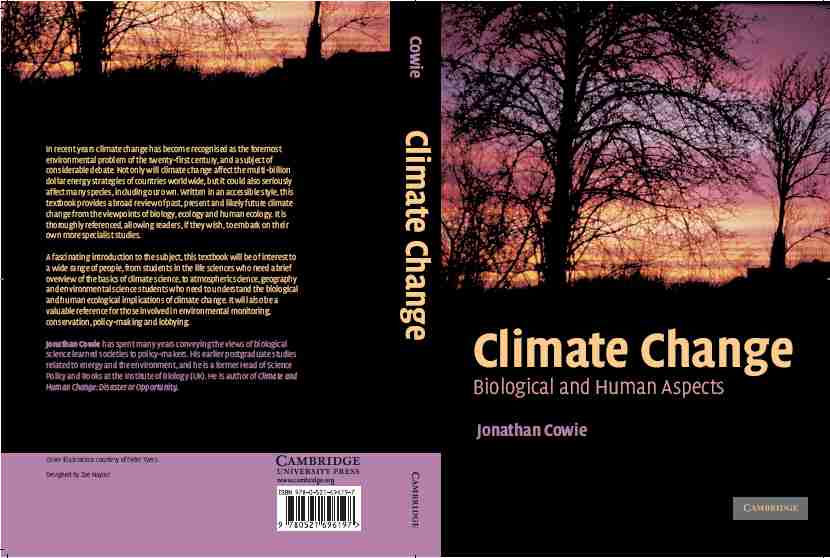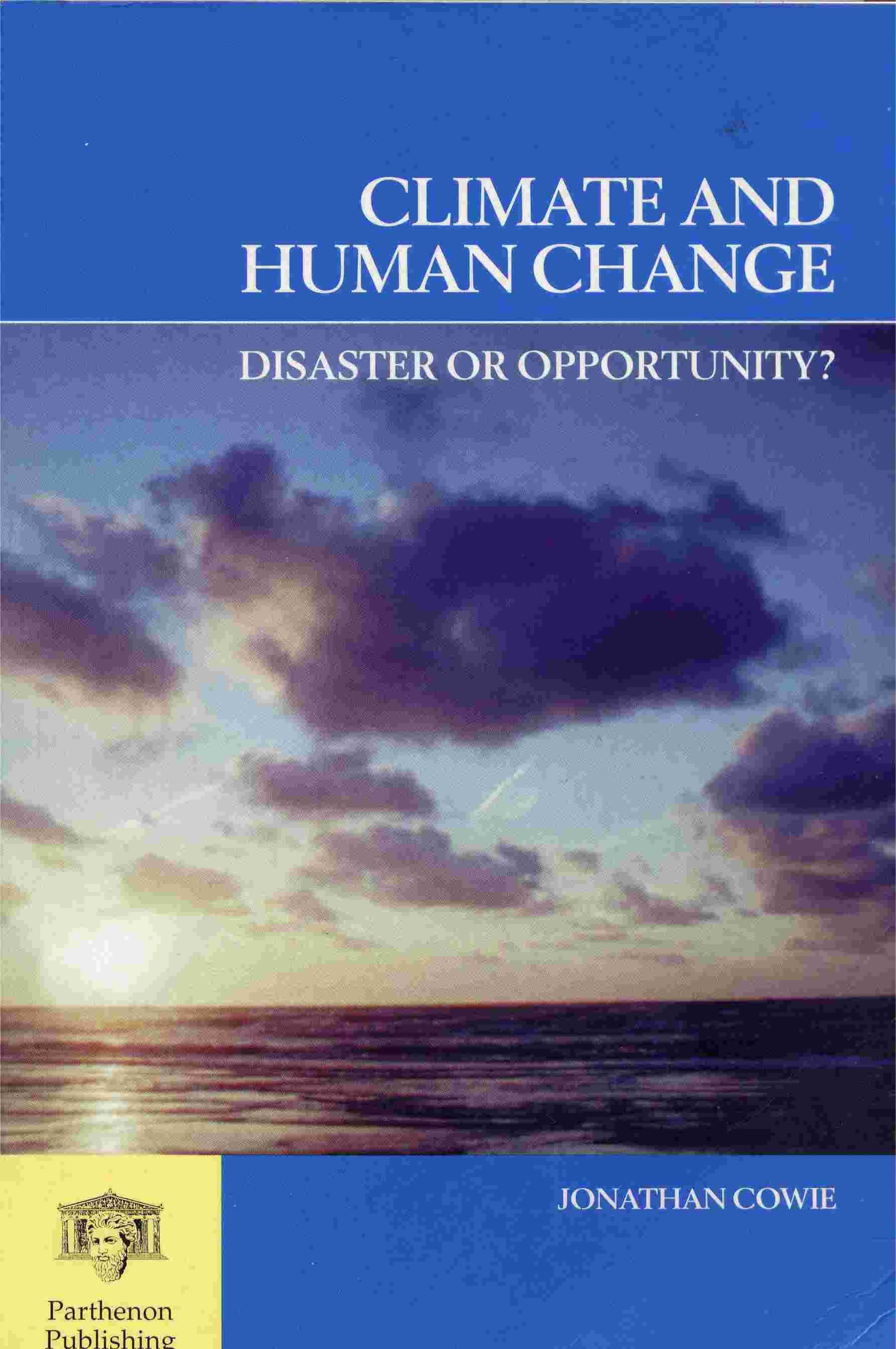 Full back/front cover of Climate Change: Biological and Human Aspects (2007) published by Cambridge University Press. It is an introduction to climate science but, at over 500 pages and in a large-size format, covers a comprehensive range of topics. Alternatively it could be viewed as a complete briefing as to the 'relevance' of climate concerns. Excerpts of book’s reviews are here. A substantially expanded and updated edition appeared in 2013.
Full back/front cover of Climate Change: Biological and Human Aspects (2007) published by Cambridge University Press. It is an introduction to climate science but, at over 500 pages and in a large-size format, covers a comprehensive range of topics. Alternatively it could be viewed as a complete briefing as to the 'relevance' of climate concerns. Excerpts of book’s reviews are here. A substantially expanded and updated edition appeared in 2013.
Climate and Human Change the 1998 climate and energy policy book. It linked greenhouse concerns with sustainable development highlighting the potential for sustainable profit. This last was a theme taken up by the (UK Treasury commissioned) 'Stern report' in 2006.
 The 1991 climate change article in Biologist not only made the cover but also formed the subject of Southampton U.'s final year biology interpretive exam in 1992.
The 1991 climate change article in Biologist not only made the cover but also formed the subject of Southampton U.'s final year biology interpretive exam in 1992.|
Climate change interactions The World is currently getting warmer but not only that the global climate has changed through out Earth's history. The planet has in the distant past been an iceworld covered in ice from the poles to (near) the equator. It has also seen ice ages with glaciers and ice caps extending down into present-day temperate latitudes. It has also been warmer too, with woodland in Antarctica and sub-tropical forest in Britain. There have been climate-driven mass-extinctions and also times of increasing biological diversity. Today, present climate change issues are bound up with the way our species harnesses energy. Climate change and energy use are subjects that Jonathan Cowie has found personally fascinating and which he has explored both himself and occasionally with the help of other Concatenation team members.
This exploration has not just been of the scientific literature but also through field visits across the UK and Europe to sites of past (on a geological scale) climate change, attending scientific symposia on climate and energy related subjects, and touring power stations (including fossil, nuclear (magnox and candu), pump storage, hydro (both mountain and lowland) and other renewable). Sites that feature ecological dimensions to climate change have also been visited including: post glacial, alpine (current and post glacial), lowland (subject to flooding and intense carbon cycling) and agricultural (various) landscapes.
The fruits of this exploration has resulted in a mass of information collated over two decades. This in turn has enabled outputs that have included: lectures and talks to schools and the public, meeting and briefing policy makers in both Whitehall and Westminster, participation in workshops for Government Agencies and Departments, and writing articles and books. The principal foci of climate interest are: The principal foci of energy interest are:
[Bioscience interactions | Climate change interactions| Science & Fiction interactions | Concatenation Science news | Home ] |